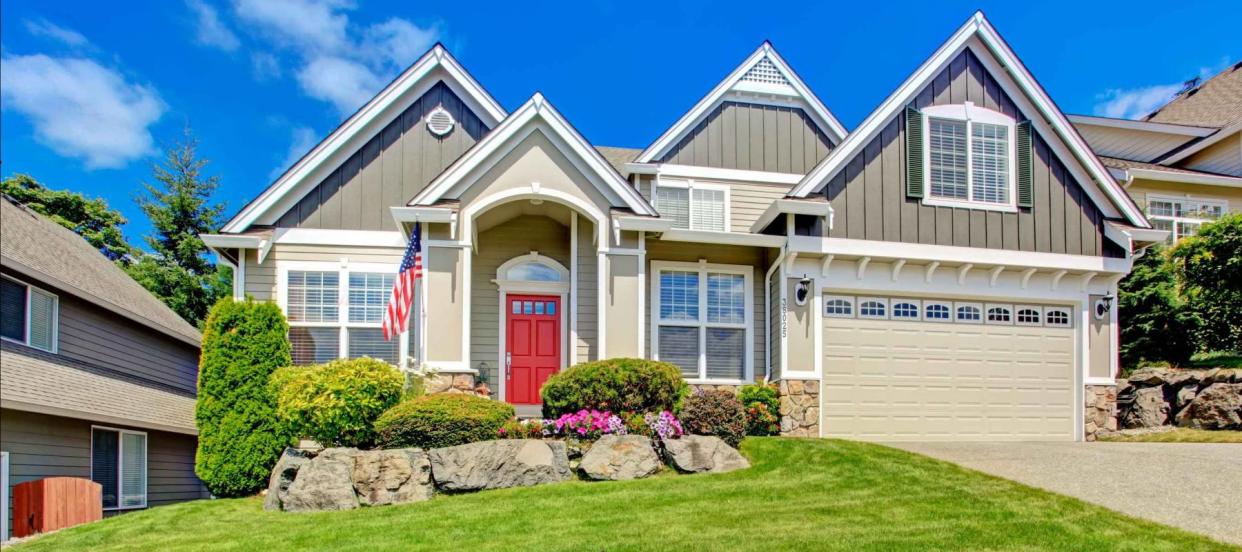How to get the cheapest 30-year mortgage rate for your refinance

Refinancing your home to take advantage of today's lowest-ever mortgage rates has become a popular pandemic activity, right up there with Zoom reunions, home baking and making TikTok videos.
Close to 1.7 million U.S. homeowners refinanced over April, May and June of this year — more than double the number who took out new loans during the same period in 2019, according to Attom Data Solutions.
The economic chaos unleashed by the coronavirus has sent mortgage rates plunging, giving homeowners a major incentive to refinance and save. At current rates for 30-year mortgages, an estimated 15.6 million Americans could refi and lower their interest rates enough to slash their monthly payments by an average $289, says mortgage data firm Black Knight.
Rates are still widely available under 3%, and at least one lender is even advertising a 30-year loan below 2%. Here are four tips on how to get the very best deal when refinancing into a fresh 30-year mortgage.
1. Get several mortgage offers and compare rates

Cast a wide net to find a good rate.
Refinancing into another 30-year loan is a good choice if your current mortgage is relatively young. You won't be stretching out your interest costs all that much if you've been in the home just a year or two and opt for a new 30-year fixed-rate mortgage.
Average rates on those loans recently dropped to an all-time-low 2.88% in the nearly 50-year-old survey from mortgage company Freddie Mac. Rates have fallen so far that you're a good refi candidate if you have a loan you took out as recently as the beginning of 2020, when the average was around 3.75%, Black Knight says.
But borrowers can't assume they'll always be be presented with the lowest rates possible. Different lenders can offer the same homeowner vastly different refinance rates.
To find your best refi deal, you've got to shop around and compare rates — not stop your search at the very first loan you're offered.
Hunting for a rock-bottom rate is worth it. A Freddie Mac study found if you get five rate quotes, you'll pay lifetime costs averaging $3,000 less than if you stop your search after hearing from just one lender.
2. Polish your credit score

Your credit score might need a nudge.
A better credit score brings better mortgage rates. Lenders like borrowers whose credit scores are very good (in the 740-to-799 range) if not exceptional (800 to 850).
To get the kind of refinance loan that will save you hundreds of dollars a month, you'll need a score of at least 720, Black Knight says.
Don't know your credit score? It's easy enough to take a peek at it for free.
If you find your credit score needs some help, take steps to raise it:
Pay down debt, especially on credit cards. A debt consolidation loan might help you get rid of credit card debt more quickly, and at much lower interest.
Don't open new credit cards, but don't close old ones either. Doing that will reduce your available credit — which could hurt your score.
Get your hands on your credit reports and make sure there are no errors that could be dragging down your credit score. A 2012 study from the Federal Trade Commission found 20% of U.S. consumers had potentially costly mistakes on their credit reports.
3. Show a lender you're more invested in your home

A bigger down payment can get you a lower rate.
Refinancing homeowners who have healthy amounts of equity in their homes tend to land the lowest 30-year refinance rates.
Equity is the percentage of your home's value that you own. To determine your equity, take the amount you've already paid on your home and divide that by what the house is currently worth. That figure — which should be to the right of a decimal point — represents your equity percentage.
To a lender, the ideal refi candidate has at least 20% equity, Black Knight says. If you still have a ways to go to reach the 20% level, you'll want to make a down payment that will put you over the line.
As an added bonus, you won't be forced to buy or keep paying for private mortgage insurance, or PMI, if you've got at least 20% equity in your home.
Private mortgage insurance offers a lender protection in case a borrower defaults. It's not to be confused with homeowners insurance — which offers you protection if your house is damaged by fires, tornadoes and most other types of disasters.
You should already have home insurance — it's vital, and most lenders require it. But each time your homeowners policy comes up for renewal, go online and get a bunch of rate quotes so you can feel confident you're not overpaying.
4. Be willing to pay 'points'

The fees known as 'points' can lower your mortgage rate.
The optional fees known as "discount points" are a type of upfront payment that can help you bag a low 30-year mortgage rate. One point equals 1% of your loan amount and can lower your rate by as much as one-quarter of 1 percentage point — say from 3.2% down to 2.95%.
Jaw-dropping mortgage rates typically come with points. United Wholesale Mortgage, one of America's largest home lenders, currently is advertising a 30-year mortgage with rates as low as 1.999%. The fine print says the loan has "estimated finance charges of $11,000," which presumably includes points.
"By paying points, you pay more upfront, but you receive a lower interest rate and therefore pay less over time," says the U.S. Consumer Financial Protection Bureau. "Points can be a good choice for someone who knows they will keep the loan for a long time."
You'll need time to break even on the points and other closing costs before you can truly start enjoying the savings from your low mortgage rate.
The CFPB says lenders have their own individual pricing structures, so you don't make the assumption that a loan with points will always have the lowest rate out there. You might find another lender offers a loan with zero points and a better rate.
It's another good reason to gather multiple loan offers and review them side by side — to make certain you get the cheapest mortgage available to you.

 Yahoo News
Yahoo News 
